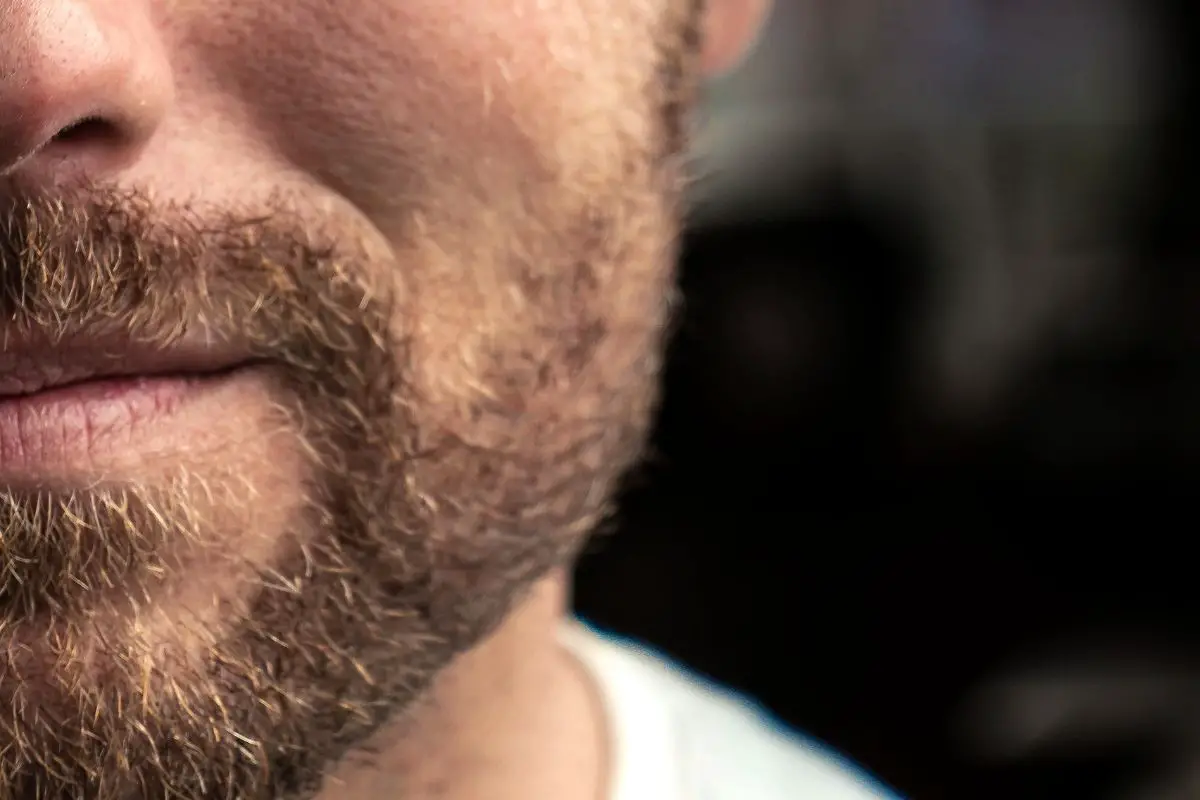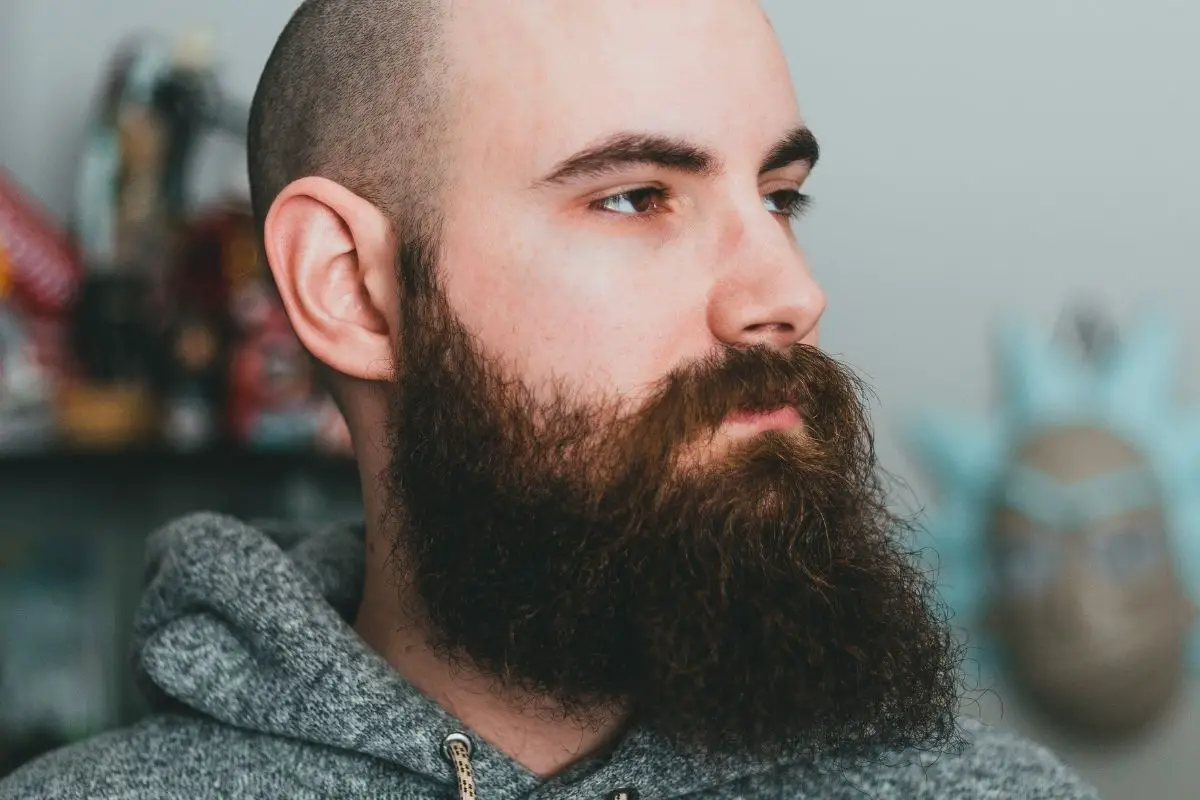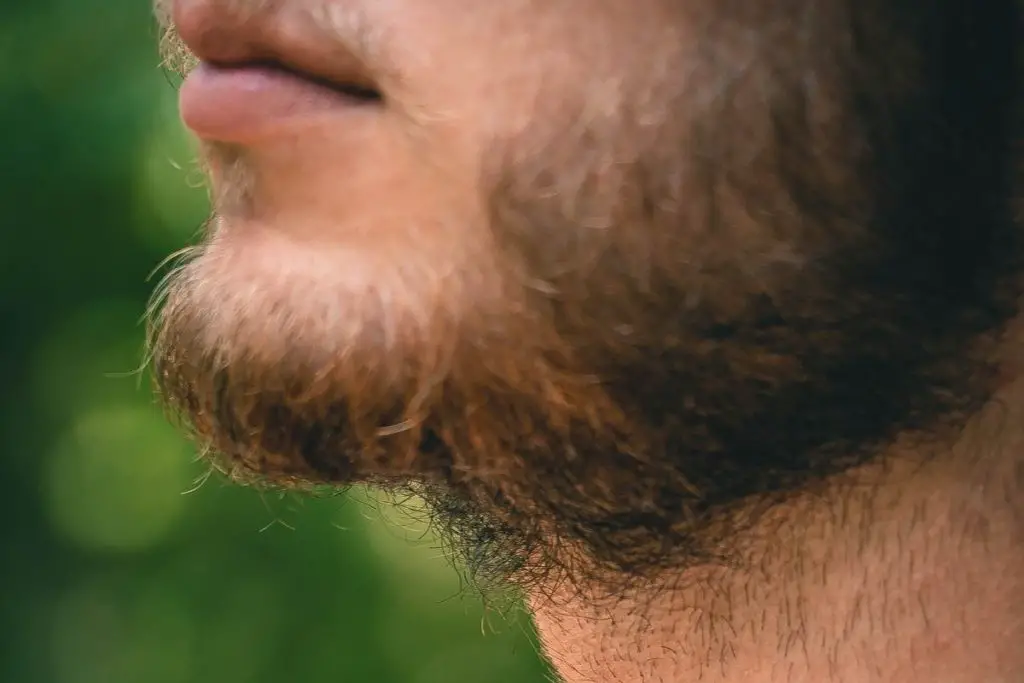
You grew a beard, and now you can’t remember what your face looks like without it. Congratulations! You’re in good company.
If you’re as committed to your facial mane as we are, it’s a good idea to learn as much as possible about it. Not only does that mean learning about grooming and maintenance but also about the science behind the beard’s quirky nature.
For instance, why beard hair sometimes grows in different directions, or, oh, I don’t know, why your beard is red even though your hair is blonde?! Or brown. You get the idea- quirky.
Anyway, grab a frosty beverage and join us as we unravel the mystery of why beards turn red.
Trust Science, Not TikTok
Yes, there are plenty of theories floating around on social media about why your beard is changing color. You can go ahead and chuck ’em in the bin.
Instead, let’s listen to Dr. Petra Haak-Bloem from the Dutch National Information Center for Genetics. In an article from Motherboard, Dr. Haak-Bloem explains:
“The genes that determine hair color are called ‘incomplete dominant hereditary traits.’ An incomplete dominant hereditary trait means that no one gene is dominant over the rest; they all influence each other.”
“The red hair is caused by a mutation in what researchers call the MC1R gene,” she continues. “Having two mutated genes gives someone all red hair, but having just one can give a person red hair in unexpected places.”
In other words, even if the gene for brown hair runs in your family, an ancestor can contribute their red-haired gene to your DNA. Because it’s an incomplete dominant hereditary trait, that gene may pop up in the next generation or several generations later. And it may explain why your beard is getting redder.
So Why is My Beard Partially Red?
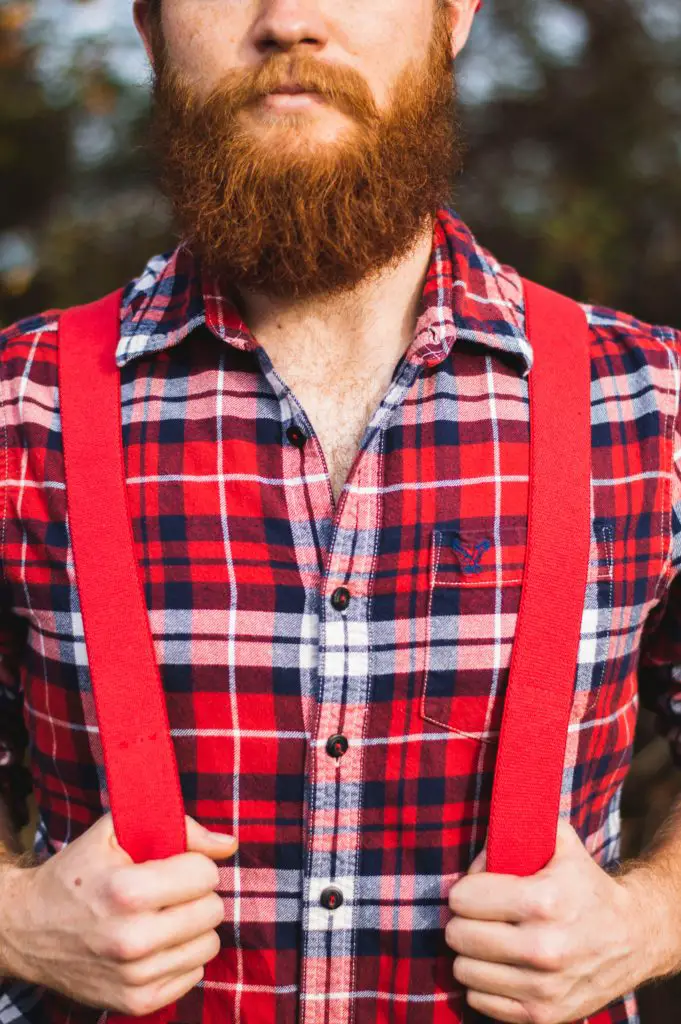
Again, the answer lies in how many mutated MC1R genes you possess. Two mutated MC1R genes mean you can expect to have red hair everywhere. One MC1R gene will manifest as partially ginger. (This phenomenon is called heterochromia, by the way.)
Why is My Beard Changing Color?
Besides natural pigment due to genetics, there are plenty of other reasons your beard may change color over time:
- Aging
Gray hairs often appear in a man’s beard well before turning up on his head. Why? No one’s actually sure; there haven’t been many studies on the topic. But we know that as we age, our melanocytes (cells that produce pigment in our bodies) tend to wear out, resulting in gray hair. Can you keep your beard from going gray? Not unless you have a time machine.
- Stress
Aging isn’t the only thing that can cause your glossy red beard to turn gray. Stress affects our hair more dramatically than you might think, and once again, it starts with pigment-producing melanocytes.
Melanocytes wear out with age, but when our sympathetic nervous system releases norepinephrine into the hair follicle during times of stress, any new melanocytes there vacate the premises. 0 new melanocytes to create new pigment = new hairs grow in gray.
- Poor Nutrition
If you think changes in hair color due to stress was science-y, wait’ll you get a load of what inadequate nutrition does!
We’d need an entirely new article on poor nutrition and its effects on beard health to explain. For the sake of brevity (and to keep your attention), we’ll give you the nutshell version and send you over to The Trichological Society for the rest:
Protein, copper, biotin, and folate/B12 deficiencies can affect hair pigmentation and cause premature greying. So eat well.
- Exposure to Chemicals and Hard Water
As we pointed out in our post, “Why is My Black Beard Turning Brown?” hard water and harsh chemicals may damage hair follicles and strip pigmentation in the process.
- Smoking
You may already know that smoking can cause premature grayness– if you didn’t, you’re probably not surprised. But smoking can also cause discoloration of the mustache in men with gray or lighter beard colors because tar and nicotine found in cigarettes stain the hair on the upper lip.
- UV Overexposure
UV exposure is one of the most dramatic contributors to a change in beard color. We know how spending a lot of time in the sun lightens our hair by stripping its pigment, but without proper SPF protection, it weakens it too. That goes for the hair on your face and head, too.
What Can I Do to Keep My Beard From Changing Color?
While you can’t stop time or thwart genetics, there are some basic things you can do to keep your beard from changing color prematurely:
- Take steps to reduce the stress in your life. Meditation, mindful breathing, and/or walking in nature are all tried-and-true ways to induce calm. Getting plenty of sleep helps, too.
- Eat right, drink plenty of water, and take your vitamins.
- If hard water is all you get in your neck of the woods, consider using a water softener. And pay attention to the ingredients in your beard care products! Many of them contain harsh chemicals that may damage the hair follicles and change your beard’s color over time.
- If you smoke, stop it now. Seriously.
- Combat the sun’s harmful effects on your beard by conditioning your beard with a leave-in treatment containing SPF.
What Can I Do to Keep My Beard Healthy?
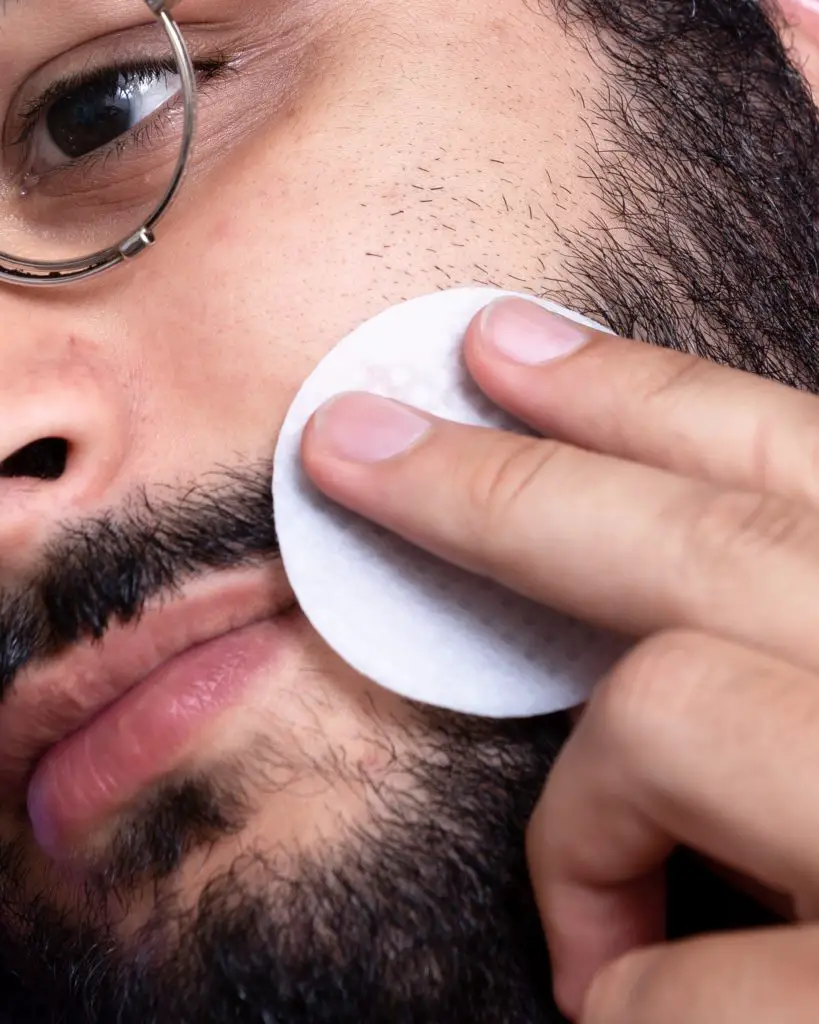
In addition to the pointers above, you can do plenty of things to keep your facial locks looking healthy, shiny, and touchable!
- Wash it, for cryin’ out loud. (But not every day.)
As a rule, you should wash your beard roughly 2-3 times per week- any more than that, and you’ll run the risk of drying it out. If you’re an oily guy or are regularly active, you may need to wash it more frequently.
If your beard is itchy and sore or dry and flaky, likely, your beard wash (and you should always use beard wash, regular shampoo is too harsh) is to blame. Always use a quality beard wash- it works better with courser beard hair and is much gentler on sensitive facial skin, too.
- Don’t forget the conditioner.
A good beard conditioner (or softener) should rehydrate your hair and skin. How often you condition your beard should be proportionate to how often you wash it. Beard conditioner is like conditioner for your hair, and you should use it the same way: apply, let it sit for 2-5 minutes while you finish showering, then rinse.
- Try Beard Oil
In addition to conditioning, using a good beard oil will balance its hydration, leaving it lustrous and glossy. Beard oil is meant to leave in after you shampoo and condition.
- Give Beard Balm a Shot
Is your beard coarse, brittle, and difficult to tame? Beard balm (aka beard cream, beard wax, or beard butter) may be your solution.
Like beard oil, beard balm can be used as a leave-in conditioner, but it’s heavier, so its conditioning effects will last longer. Because of its richer consistency, it also multitasks as a beard styler. (Who doesn’t love a multitasker?)
Applying your beard balm after you shower is recommended. You can also use a tiny amount to freshen up before a big night out. Since they’re more or less the same, there’s no need to use both beard balm and beard oil.
What Can I Do to Keep My Beard Looking Great?
After washing and conditioning, styling is the next step to a great-looking beard. Taming the savage beard isn’t easy sometimes, which is why you need a great arsenal full of beard products! Here are a few suggestions:
- Start with the right tools.
Invest in a great beard comb, brush (preferably boar’s head), and trimming scissors. Adding a round brush and a quality hairdryer to your collection of beard care swag is a good idea if you sport longer facial locks. And don’t be cheap- like cooking tools in the kitchen and beard tools in the bathroom make a difference.
- Tame it With Styling Balm.
A good styling balm should balance lightweight consistency and firm control perfectly. There are plenty of styling balms on the market for every beard’s thickness, length, and texture- finding the right one for you is just a quick google search away!
- Preen With Mustache Wax.
Stiffer than styling balm, mustache wax is designed to hold your mustache’s shape all day. Apply a small amount (a little goes a long way), then sculpt. Easy peasy.
Embrace the Ginger!
Beards show no signs of falling out of fashion anytime soon (case in point: the World Beard & Moustache Championship coming up in 2023), and I couldn’t be happier about that. It follows that it’s only a matter of time before some of us can expect our beards to redden!
This is a cause for rejoicing- not only is a red beard attractive and interesting, but it also looks cool. Like, Viking cool.
- Why is my Beard Thin? - May 1, 2023
- How to Trim Your Beard Like a Barber - April 27, 2023
- How to Shape Your Beard Properly - April 27, 2023



